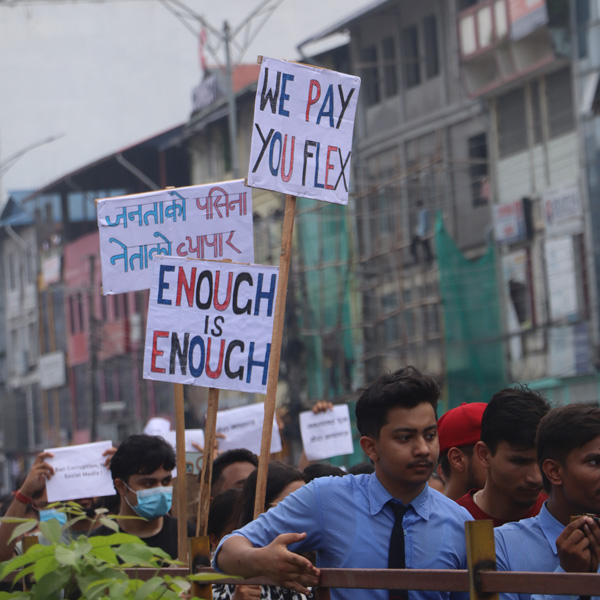Social media in Nepal has become a trigger for Gen Z to drive political change

[Nepal protest. Photo Credit to Wikimedia Commons]
On September 4, 2025, Nepal’s government banned 26 social media platforms within the country, such as Facebook, Instagram, WhatsApp, YouTube and X.
The move triggered immediate and widespread protests, largely driven by Gen Z and other young citizens.
“The protests are fuelled by the frustration of youth and their disbelief in authority, as they feel sidelined from decision-making,” says Yog Raj Lamichhane, an assistant professor at the School of Business at Nepal’s Pokhara University.
The ban and subsequent protests were largely sparked by the hashtag #Nepobaby.
The term refers to young individuals who benefit from their parents’ influence and connections.
In a country where a large portion of the population lives in poverty, posts highlighting these privileged lifestyles drew public outrage and criticism.
As anger spread, the government tightened restrictions and blocked access to social media platforms.
Officials, however, defended the policy, saying it was aimed at “tackling fake news, hate speech and online fraud.”
For Nepal’s Gen Z, social media has been more than a source of entertainment.
“Social media allows Nepali youth to take part in conversations, discussions and debates about issues that potentially shape the future that they want for themselves in Nepal,” one student protester told Nepali times.
Many young citizens therefore viewed the ban as outright censorship, a direct limit on their rights and their ability to speak freely.
In response, Gen Zs used alternative platforms such as Discord and VPN-supported Instagram to coordinate demonstrations.
Information spread rapidly, fueling a wave of protests nationwide.
By September 9, demonstrations had escalated into violent clashes targeting government buildings, including the Singha Durbar, the administrative headquarters in Kathmandu.
The confrontations turned deadly.
Seventy-two people were killed, and on Tuesday, September 9, Prime Minister KP Sharma Oli was blamed for the violent fallout.
He resigned under pressure the same day.
The fact that young citizens, most of them from Gen Z, were able to push out the country’s leader demonstrated the growing power of youth activism.
Their collective voice influenced not only the streets but also the leadership of the nation.
As a result, the protests became a powerful demonstration of outraged citizens reclaiming their rights, defending their freedom of expression, and demanding reforms to address corruption.
Social media proved to be more than a tool for communication; it became the mechanism that brought political and social change, allowing people to coordinate across Nepal and broadcast their movement to the world.
The events in Nepal reflect a global pattern.
Similar youth-led protests have used digital platforms as catalysts, such as the pro-democracy protests in Hong Kong between 2019 and 2020 and the Mahsa Amini protests in Iran in 2022.
Gen Z in Nepal has now joined that lineage of movements, showing the world that collective action, when amplified online, can shift power and reshape the course of a nation.

- Delci Lee / Grade 11 Session 4
- Kitsilano Secondary School

![THE HERALD STUDENT REPORTERS [US]](/assets/images/logo_student_us.png)
![THE HERALD STUDENT REPORTERS [Canada]](/assets/images/logo_student_ca.png)
